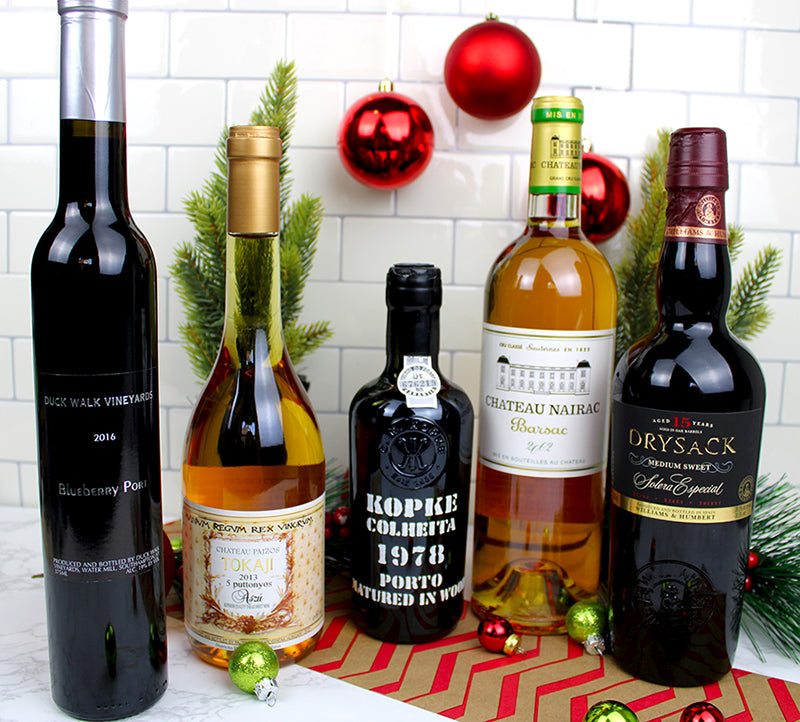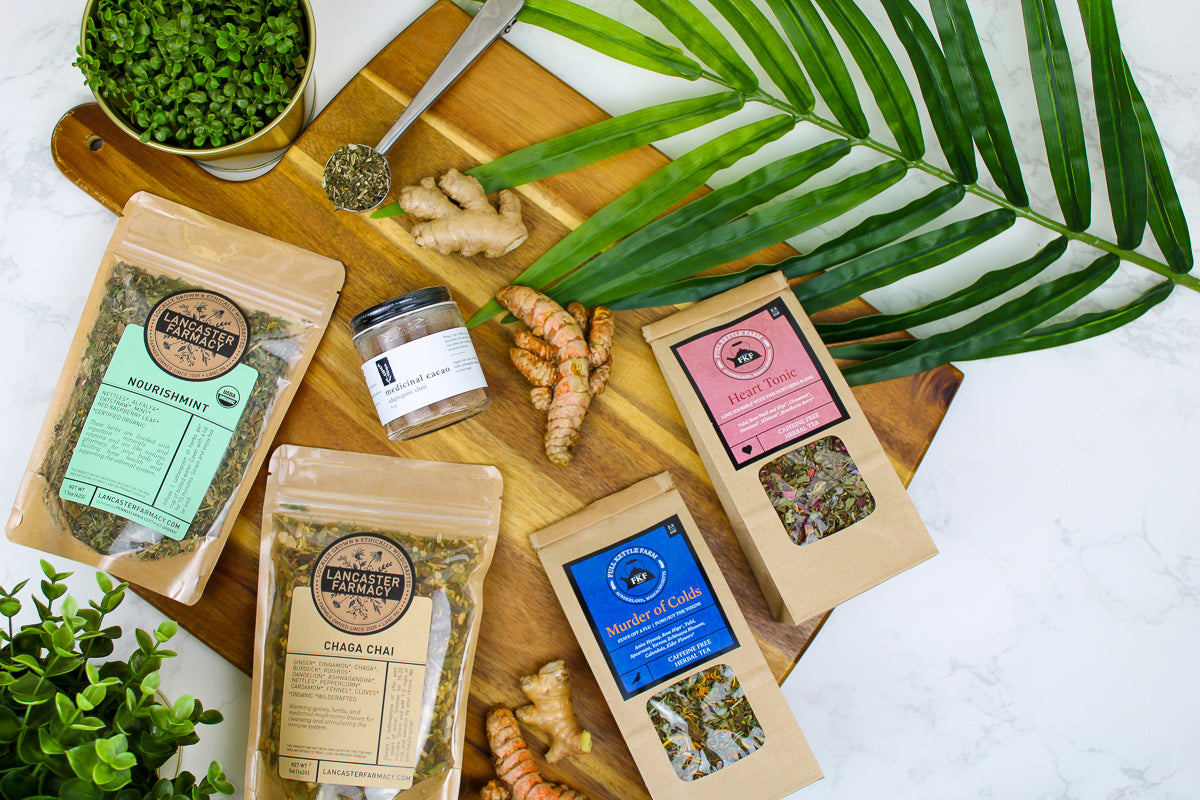
All You Can Sweet: A Guide to Dessert Wines
The holiday season is like the Super Bowl for desserts―cookies, cakes, pies, chocolates, sugar plums. It’s game on for anyone with a sweet tooth. Despite this sugar rush, dessert wines are often left on the sidelines. So what gives? The truth is that dessert wines, a broadly named category that includes both sweet wines, such as Sauternes, and fortified wines, like Sherry and Madeira, are among the most complex, most noble, and long-lived wines in the world. They are absolutely delicious―maybe even downright transformative (just ask Wine & Spirits General Manager Michele Thomas about the “baby Jesus wine”)―alongside dessert, cheese, or even on their own. Here’s our guide to all you can sweet!

Noble Rot/Vendange Tardive
Vendange Tardive sounds like the name of a DJ-led goth band, but it’s just French for “late harvest.” The term refers to wines that are made from grapes that were left on the vine for as long as possible during the harvest season, allowing them to become very ripe and accumulate lots of natural sweetness. Sometimes, healthy and ripening grapes are attacked by a fungus called Botrytis cinerea. Botrytis, which punctures grape skins to dehydrate them, concentrates sugars, acidity and flavor into pure deliciousness, leaving botrytized wines with unique flavor notes such as ginger, orange blossom, and wild honey.
Try:
Chateau Nairac Barsac 2002
Chateau Pajzos Tokaji Aszu 5 Puttonyos 2009
Domaine Bordenave 'Harmonie' Jurancon 2013
Fortified Wines
Fortified wines get their name from the process by which they are made. In brief, neutral grape spirit (typically brandy) is added to a wine either during or just after fermentation, boosting the alcohol content. If the wine is fortified before the fermentation process is complete, the wine will be sweeter; if fortified after fermentation, the wine will be less so. Sherry, port, and Madeira are the most widely known fortified wines.
Sherry
Sherry is produced in Jerez, in southern Spain, and is available in several styles ranging from sweet to bone dry. It’s made from any combination of three grapes, Palomino Fino, Moscatel, and Pedro Ximénez, or PX, and aged using the solera fractional blending system, in which wine from older barrels is topped up with younger wine, resulting in a unique blend of wine.
Try:
Drysack 15 Year Medium-Sweet Sherry
Callejuela Manzanilla Sherry
Madeira
Madeira comes from a Portuguese island of the same name off the coast of Morocco, and has one of the most interesting vinification processes. The wine is oxidized and heated slowly, repeatedly, creating a so-called “ruined” wine with notes of dried fruit, nuts, honey, and dates that is extremely age-worthy (some last for centuries). Made from any combination of Sercial, Verdelho, Bual and Malmsey, Madeira can be dry or sweet.
Try:
Henrique & Henriques 5-year Madeira
Port
Like sherry and Madeira, port also calls the Iberian peninsula home. Port is always sweet and usually red, although drier white styles exist. Ruby ports are known for their rich color, and notes of red berries and chocolate, whereas tawny ports are aged a bit longer and more oxidative in style, allowing for more textured flavors of dried fruit, nuts, espresso and toffee. Typically made from Touriga Nacional, an indigenous varietal, port is classically made in Portugal’s Douro Valley, then aged in Vila Nova de Gaia, across the river from the city of Porto.
Try:
Niepoort Ruby Port
Niepoort Tawny Port NV
Palmer 10 Year Tawny Port NV


